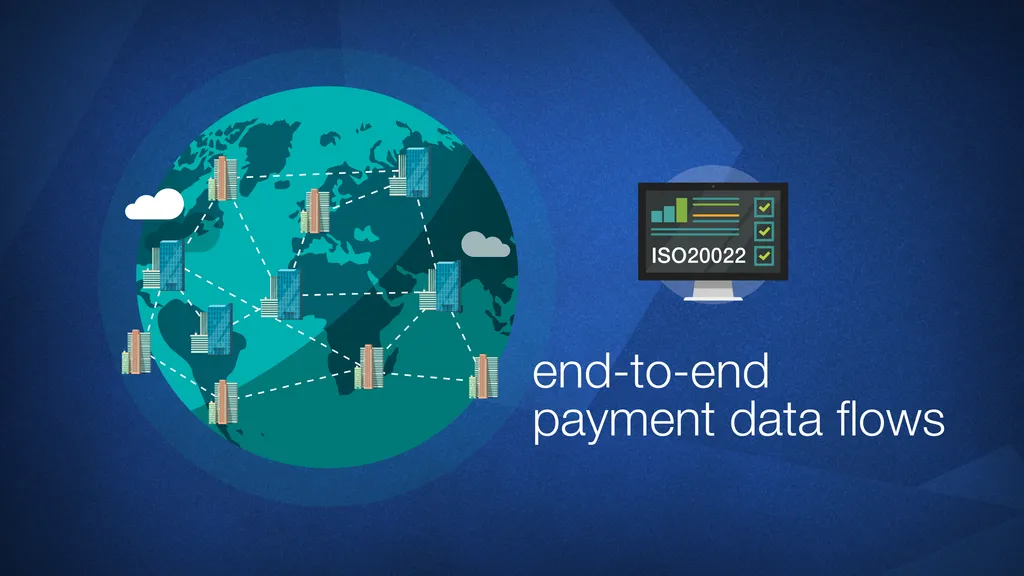ISO 20022 is not exactly a new payment messaging standard, but its implementation nonetheless represents a watershed moment for the financial services industry.
SWIFT is phasing in ISO 20022 as the standard for cross-border payments and cash reporting from November 2022. From the end of this year, the previous ‘MT’ messaging standard will only be supported for backward compatibility purposes with future investments focused on ISO 20022.
The standard has already been adopted for high-value payments in 12 market infrastructures in multiple markets (see the infographic below), replacing domestic or legacy formats. SWIFT predicts that over the next few years all the major payment market infrastructures will switch to ISO 20022, which will dominate high value payments supporting approximately 80% of volume and 87% of the value of transactions worldwide.
The first area we are seeing really significant benefits in is operational resilience. ISO 20022 will lead to increased transparency, automation and digitisation of payments, as well as faster processing rates which will make payment delivery more efficient and lower cost.
If we think about some of the longer term benefits, richer data means more information about the payment for reconciliation purposes. ISO 20022 also supports greater interoperability between different payments systems and interfaces thanks to the use of a common language.
Understanding how businesses are making payments and the underlying data behind those payments gives us an opportunity to unlock new opportunities in transaction banking. When combined with SWIFT GPI the standard creates a harmonised data structure and transparency between end-to-end payments.
In addition to replacing various bank-specific formats, ISO 20022 supports additional data elements that are carried along the end-to-end payment chain – including the account statements that corporates receive from their bank. Enriched payment data also enables more advanced analytics for better liquidity forecasting or improved risk insights.
Implementing ISO 20022 is one of the biggest technical changes many organisations will ever face. It is therefore critical to have engagement across all lines of businesses and allocate sufficient resources to the task.
A good starting point is to understand the underlying database structures to ensure the applications can adapt to structured name and address, for example, as this provides the most immediate benefit by reducing false positives and manual intervention and supporting more straight-through processing of payments.

Another crucial feature is payment fields, which provide insight into why clients are making payments and how they are doing business across market infrastructures.
Most organisations will need to upgrade their payment platforms and reporting guidelines to support ISO 20022 to some extent, but this is not just about technology – the new standard is going to drive the future of payments, which means we are going to be speaking to clients in a new language. But as organizations make the investment it also means they will benefit from speaking that same common language from end-to-end of the payment life cycle
Another factor to note is the disparity in process and different requirements from each of the different market infrastructures. We are witnessing a huge range of approaches from regular reporting and monitoring to very prescriptive migration paths. Yet all are on their way to a common standard of usage.
Transparency and partnership are vital to successful adoption of the standard, so collaboration between clients, partners and peer banks to agree on appropriate implementation guidelines during the migration period is vital.
Make sure your business has a structured ISO 20022 programme and don’t be afraid to ask your business partners for help. There is particular value in engaging with key stakeholders and providers of resources and information, such as SWIFT national groups.
Transparency and partnership are vital to successful adoption of the standard, so collaboration between clients, partners and peer banks to agree on appropriate implementation guidelines during the migration period is vital
Across sales, product and service teams, everyone needs to understand how critical this migration is and establish the appropriate communications and strategic processes. As a payment industry leader we are committed to driving awareness of ISO 20022 to all participants in the ecosystem.
The implementation process also represents an opportunity for corporates to review their end-to-end payment processing and cash management mechanisms and make sure they are doing things in the most efficient way.
We have already reviewed of all our end-to-end payment processes and technology systems in
JPMorgan to make sure they are ready and able to use the data most effectively.
In conclusion, the move to ISO 20022 represents a tremendous opportunity to ask questions of your business to understand how it will benefit from the migration. What are the benefits of having enriched data and how can this data be leveraged? How can it improve your clients’ experience?
How can it help make better informed business decisions?
Organisations are going to have access to incredibly rich payment data, so make sure your payments ecosystem can accept ISO 20022 in time in order to make the most of this game-changing global payments infrastructure by 2025 at the latest but the earlier the better.
Read the other articles in this content series:
Third-party money: A new form of cash management for treasurers
The megatrends revolutionising payments, and the world





